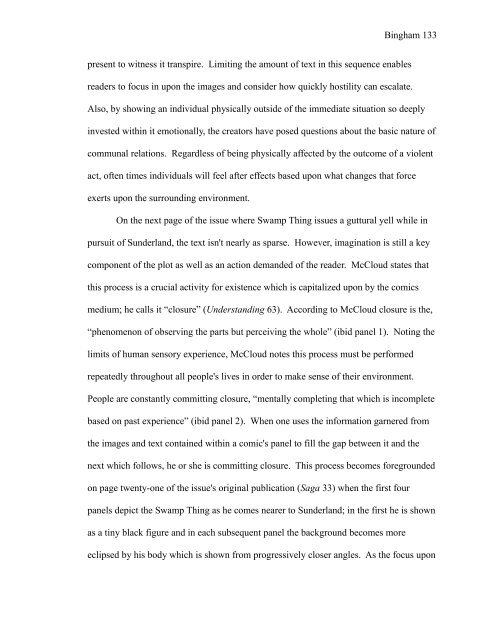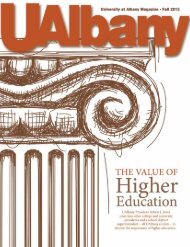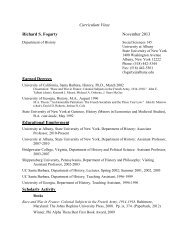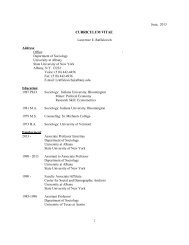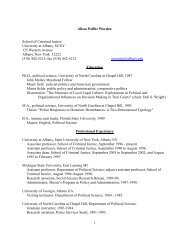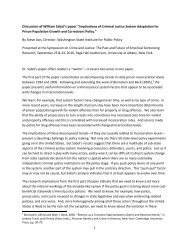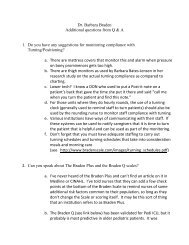Walking Corpses & Conscious Plants: Possibilist Ecologies in ...
Walking Corpses & Conscious Plants: Possibilist Ecologies in ...
Walking Corpses & Conscious Plants: Possibilist Ecologies in ...
Create successful ePaper yourself
Turn your PDF publications into a flip-book with our unique Google optimized e-Paper software.
B<strong>in</strong>gham 133<br />
present to witness it transpire. Limit<strong>in</strong>g the amount of text <strong>in</strong> this sequence enables<br />
readers to focus <strong>in</strong> upon the images and consider how quickly hostility can escalate.<br />
Also, by show<strong>in</strong>g an <strong>in</strong>dividual physically outside of the immediate situation so deeply<br />
<strong>in</strong>vested with<strong>in</strong> it emotionally, the creators have posed questions about the basic nature of<br />
communal relations. Regardless of be<strong>in</strong>g physically affected by the outcome of a violent<br />
act, often times <strong>in</strong>dividuals will feel after effects based upon what changes that force<br />
exerts upon the surround<strong>in</strong>g environment.<br />
On the next page of the issue where Swamp Th<strong>in</strong>g issues a guttural yell while <strong>in</strong><br />
pursuit of Sunderland, the text isn't nearly as sparse. However, imag<strong>in</strong>ation is still a key<br />
component of the plot as well as an action demanded of the reader. McCloud states that<br />
this process is a crucial activity for existence which is capitalized upon by the comics<br />
medium; he calls it “closure” (Understand<strong>in</strong>g 63). Accord<strong>in</strong>g to McCloud closure is the,<br />
“phenomenon of observ<strong>in</strong>g the parts but perceiv<strong>in</strong>g the whole” (ibid panel 1). Not<strong>in</strong>g the<br />
limits of human sensory experience, McCloud notes this process must be performed<br />
repeatedly throughout all people's lives <strong>in</strong> order to make sense of their environment.<br />
People are constantly committ<strong>in</strong>g closure, “mentally complet<strong>in</strong>g that which is <strong>in</strong>complete<br />
based on past experience” (ibid panel 2). When one uses the <strong>in</strong>formation garnered from<br />
the images and text conta<strong>in</strong>ed with<strong>in</strong> a comic's panel to fill the gap between it and the<br />
next which follows, he or she is committ<strong>in</strong>g closure. This process becomes foregrounded<br />
on page twenty-one of the issue's orig<strong>in</strong>al publication (Saga 33) when the first four<br />
panels depict the Swamp Th<strong>in</strong>g as he comes nearer to Sunderland; <strong>in</strong> the first he is shown<br />
as a t<strong>in</strong>y black figure and <strong>in</strong> each subsequent panel the background becomes more<br />
eclipsed by his body which is shown from progressively closer angles. As the focus upon


